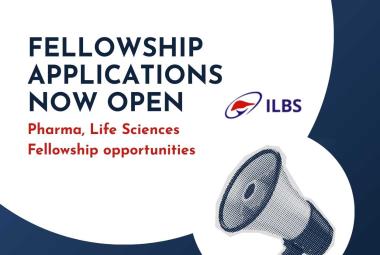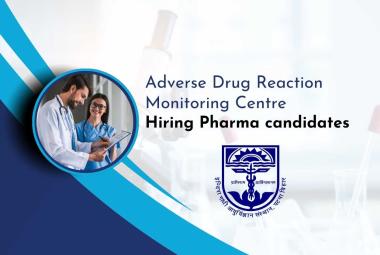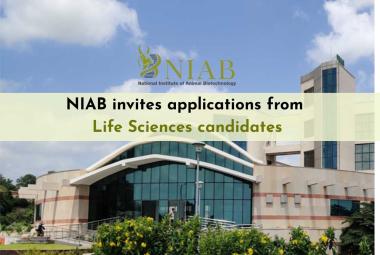{ DOWNLOAD AS PDF }
 ABOUT AUTHOR
ABOUT AUTHOR
Mohammad Asif
Department of Pharmacy, GRD(PG) Institute of Management and Technology,
Dehradun, Uttarakhand, India
aasif321@gmail.com
ABSTRACT
Different heterocyclic analogues were evaluated for their diverse biological activities. The triazole moiety seems to be very small but in the biological profile has attracted the attention of many researchers to explore this skeleton to its multiple potential against several activities. Triazole analogues have a wide range of biological applications including antimicrobial, antimalarial, antitubercular, anti-inflammatory, analgesic, antiepileptic, antiviral, antihypertensive, antianxiety, antidepressant, antihistaminic activities etc. This review provides a brief response of the medicinal chemistry of triazole analogues particulary as analgesic and anti-inflammatory activities.
[adsense:336x280:8701650588]
REFERENCE ID: PHARMATUTOR-ART-2289
|
PharmaTutor (ISSN: 2347 - 7881) Volume 2, Issue 12 How to cite this article: M Asif; Analgesic and Anti-Inflammatory Activities of Different Triazole Analogues; PharmaTutor; 2014; 2(12); 62-71 |
INTRODUCTION
In the previous years the synthesis of high nitrogen containing heterocyclic systems has been attracted to many pharmaceutical and agrochemical industries. The triazole nucleus is one of the most important heterocycles which is a feature of natural products and medicinal agents. Triazole has a five-membered ring of two carbon atoms and three nitrogen atoms.Triazole nucleus is enjoying their importance as being the center of activity. The nitrogen containing heterocyclics are found in abundance in most of the medicinal compounds. The triazoles are said to be the isosters of imidazoles in which the carbon atom of imidazole is isosterically replaced by nitrogen [1-5]. Triazole refers to either one of a pair of isomeric chemical compounds with molecular formula C2H3N3, having a fivemembered ring of two carbon atoms and three nitrogen atoms. The two isomers are:
 Out of these two, 1,2,4-triazole possess significant and wide variety of activity in comparison to 1,2,3-triazole [6]. 1,2,3-triazole is considered to be the most stable organic compound in comparison to all other organic compounds possessing three adjacent nitrogen atoms. Aziridine was formed by flash vacuum pyrolysis from 1,2,3-triazole at 500°C which leads to loss of molecular nitrogen. 1,2,3-triazole is considered to be the most useful component, widely used in research purpose as a building block for complex chemical compounds such as pharmaceutical drugs like tazobactam [7]. Triazole is a basic aromatic heterocycle and its derivatives posses a wide variety of pharmacological activities.In recent years, the chemistry of triazoles and their fused heterocyclic derivatives has received considerable attention owing to their synthetic and effective biological importance. Triazole derivatives exhibit wide range of biological activities including antibacterial [8-10] antifungal [11,12], analgesic/anti-nociceptive, anti-inflammatory [13-15], antitubercular [16-18], anti-convulsant [19,20], anticancer [21-24], antioxidant [25-27], antimalarial [28-30], antiviral [31], anthelmintic [32] and other activities. The attachment of other heterocyclic ring or substitution with different groups to triazole ring is responsible for producing more effective compounds and further modifications can be made on it to enhance its pharmacological effect. Substitution at 3rd position may also increase the pharmacological activity of a compound for e.g 3-Amino-1,2,4 triazole is a competitive inhibitor of the production of HIS3 gene, imidazoleglycerolphosphate dehydratase. It is an enzyme catalyzing the sixth step of the histidine production and is also a non selective systemic triazole herbicide used on non food crop land to control annual grasses and broad leaf and aquatic weeds [33-35].
Out of these two, 1,2,4-triazole possess significant and wide variety of activity in comparison to 1,2,3-triazole [6]. 1,2,3-triazole is considered to be the most stable organic compound in comparison to all other organic compounds possessing three adjacent nitrogen atoms. Aziridine was formed by flash vacuum pyrolysis from 1,2,3-triazole at 500°C which leads to loss of molecular nitrogen. 1,2,3-triazole is considered to be the most useful component, widely used in research purpose as a building block for complex chemical compounds such as pharmaceutical drugs like tazobactam [7]. Triazole is a basic aromatic heterocycle and its derivatives posses a wide variety of pharmacological activities.In recent years, the chemistry of triazoles and their fused heterocyclic derivatives has received considerable attention owing to their synthetic and effective biological importance. Triazole derivatives exhibit wide range of biological activities including antibacterial [8-10] antifungal [11,12], analgesic/anti-nociceptive, anti-inflammatory [13-15], antitubercular [16-18], anti-convulsant [19,20], anticancer [21-24], antioxidant [25-27], antimalarial [28-30], antiviral [31], anthelmintic [32] and other activities. The attachment of other heterocyclic ring or substitution with different groups to triazole ring is responsible for producing more effective compounds and further modifications can be made on it to enhance its pharmacological effect. Substitution at 3rd position may also increase the pharmacological activity of a compound for e.g 3-Amino-1,2,4 triazole is a competitive inhibitor of the production of HIS3 gene, imidazoleglycerolphosphate dehydratase. It is an enzyme catalyzing the sixth step of the histidine production and is also a non selective systemic triazole herbicide used on non food crop land to control annual grasses and broad leaf and aquatic weeds [33-35].
[adsense:468x15:2204050025]
Triazoles are the class of heterocyclic compounds which are under study since many a years. They have a five-membered ring of two carbon atoms and three nitrogen atoms azole ring are readily able to bind with a variety of enzymes and receptors in biological system via diverse non-covalent interactions, and thus display versatile biological activities. Nitrogen containing heterocyclic systems has been attracting increasing interest because of their utility in various applications, especially chemotherapy. That’s why the search for new biological active agent is one of the most challenging tasks to the medicinal chemist. In recent years, the chemistry of triazole derivatives has received considerable attention owing to their synthetic and effective biological importance. Triazoles have drawn great attention to chemists due to its wide variety of activity, low toxicity and good pharmacokinetic and pharmacodynamic profiles. The triazole antifungal drugs include fluconazole, isavuconazole, itraconazole, voriconazole, pramiconazole, and posaconazole. The triazole plant protection fungicides include epoxiconazole, triadimenol, propiconazole, metconazole, cyproconazole, tebuconazole, flusilazole and paclobutrazol. Triazole is a surprisingly stable structure compared to other organic compounds with three adjacent nitrogen atoms. Triazole finds use in research as a building block for more complex chemical compounds, such as pharmaceutical drugs like tazobactam.Some of the marketed preparation which contains triazole ring is fluconazole and itraconazole. Some triazole based drugs available in clinical uses areItraconazole, Voriconazole, Fluconazole, Posaconazole (antifungal), Rilmazafone (anxiolytic), Nefazodone, Trazodone (antidepressant), Trapidil (antihypertensive and vasodilator), Estazolam (sedative-hypnotic), Rufinamide (antiepileptic), Ribavirin (antiviral), Anastrozole (antineoplastic) and Alprazolam (tranquillizer) [1-5].
CHEMISTRY OF TRIAZOLE: Triazole, also known as pyrrodiazole is one of the classes of organic heterocyclic compounds containing a five membered diunsaturated ring structure composed of three nitrogen atoms and two carbon atoms at non-adjacent positions. The simplest form of the triazole family is triazole itself. Triazole is a white to pale yellow crystalline solid with a weak, characteristic odour; it is soluble in water and alcohol, melts at 120°C and boils at 260°C. It occurs as a pair of isomeric chemical compounds 1,2,3- triazole, 1, and 1,2,4-triazole, with molecular formula C2H3N3, and a molecular weight of 69.06 . The two isomers are: 1,2,3- triazole 1,2,4- triazole [1-5]
BIOLOGICAL SIGNIFICANCES OF TRIAZOLE ANALOGUES: The triazole are versatile and has been featured in a number of clinically used drugs. The most relevant and recent studies have revealed that triazole derivatives have a broad spectrum pharmacological activity which can be classified into the following categories: In the last few years, heterocyclic compounds have attracted strong interest and a lot of work has been done on triazole ring. Many different derivatives have been prepared from it which possesses useful pharmacological activities. In the present review, we have compiled the different pharmacological activities of triazole ring and its derivatives. It has been observed that triazole derivatives possess a wide range of pharmacological activities such as anticancer, anticonvulsant, antimicrobial, anti-inflammatory, antioxidant, antitubercular, antimalarial, antinociceptive etc. In triazole ring, substitution at 1,4 and 1,3 positions of a more electronegative group will possess more active analogues. This review contains various pharmacological activities of triazole in one place and it is also the milestone for the new research towards this moiety.
ANALGESIC AND ANTI-INFLAMMATORY ACTIVITIESOF TRIAZOLE ANALOGUES: Various triazole analogues were reported as analgesic and anti-inflammatory activities are discussed below:
A series of 3-(2,4-dichlorophenoxy)methyl)-1,2,4-triazolo(thiadiazoles and thiadiazines) were screened for their anti-inflammatory activity [36]. Among the compound, 3-((2,4-dichloro phenoxy)methyl)-6-(4-methoxyphenyl)-[1,2,4]triozolo[3,4-b](1,3,4)thiadiazole (1), 3,6-Bis ((2,4-dichlorophenoxy)methyl)-[1,2,4]triazolo[3,4-b]-[1,3,4]thiadiazole (2), 3-((2,4-Dichloro-phenoxy) methyl)-6-phenyl-7H-[1,2,4] triazole [3,4-b] [1,3,4]thiadiazine (3) and 3-((2,4-dichloro phenoxy methyl)-7-((3-benzofuran-2-yl)-1-phenyl-1H-pyrazol-4-yl)methylene)-6-(benznofuran-3-yl)-7H-[1,2,4]triazolo[3,4-b] [1,3,4] thiadiazine (4), showed potent anti inflammatory activity. New series of 2-[4-(substituted benzylideneamino)-5-(substituted phenoxymethyl)-4H-1,2,4-triazole -3- ylthio] Acetic acid derivatives 5 has been synthesized and were evaluated in vivo anti inflammatory activities [37]. Among the series 2-[4-(2,4-dichlorobenzylidenemino) -5- phenoxymethyl)-4H-1,2,4-triazole-3-ylthio] acetic acid5a, 2-[4-(4-dichloro benzylideneamino)-5-phenoxy methyl)-4H-1,2,4 triazole-3-yl thio] acetic acid 5b, 2-[4-(2,4-dichlorobenzyl -ideneamino)-5-[(2,4-dichlorophenoxy)methyl]-4H-1,2,4-triazole-3-ylthio] acetic acid 5c and 2-[5-[(2,4-dichlorophenoxy)methyl)]-4-(4-chlorobenzylidene amino)-4H-1,2,4-triazole-3yl thio] acetic acid 5d showed significant anti inflammatory activity. Synthesis of 3-[1-(4-(2-methylpropyl)phenyl)ethyl]-1,2,4-triazole-5-thione 6 has been carried out and its condensed derivatives 6-benzylidenethiazolo[3,2-b]-1,2,4- triazole-5(6H)-ones were described [38]. In the pharmacological studies, anti-inflammatory activities of these compounds have been screened. Among the compounds examined, the two compounds possessed the most prominent and consistent activity. In gastric ulceration studies the synthesized compounds were generally found to be safe at a 200 mg/kg dose level.

1,2,4-triazole derivatives (7) were evaluated for their anti-inflammatory activity [39]. 5-phenyl-1-(3-pyridyl)-1H-1,2,4-triazole- 3-carboxylic acid derivatives (8) were evaluated for their anti-inflammatory activity [40]. The 3-arylamino-5-(1-substituted ethyl)-4H-1,2,4-triazole derivatives (9) were evaluated for their anti-inflammatory activity [41]. The 3,4-disubstituted-5-mercapto-1,2,4-triazoles derivatives (10) were evaluated for their analgesic activity [42]. The 1,2,4-triazole derivatives (11) were evaluated for their anti-inflammatory activity [43].

A series of 6-alkoxy (phenoxy)-[1,2,4] triazole [3,4-a] phthalazine-3-amine derivatives (12). All synthesized derivative further screened for their anti-inflammatory activity. The compounds12a and 12b possess highest anti-inflammatory activity in comparison to the reference drug Ibuprofen [44]. A series of 1-[2-(1H-tetrazol-5-yl)ethyl]-1H-benzo-1,2,3-triazole derivative (13) and the synthesized compounds were screened for anti-nociceptive and anti-inflammatory activity. It was found that compounds 13a and 13b possess significant anti-nociceptive activity while compounds13c and 13d possess significant anti-inflammatory activity [45].

A series of 1, 3, 4-oxadiazole[14a-14b] and 1,2,4-triazole [14c] derivatives of 4-hydroxyphenyl acetic acid were evaluated for their anti-inflammatory activity. These compounds were showed good anti-inflammatory activity, ulcerogenic and lipid peroxidation activities. The synthesized triazoles (15 and 16) showed anti-inflammatory activity. The synthesized substituted Triazoles (17 and18) were showed anti-inflammatory activity. The synthesized triazoles (19) were showed anti-inflammatory activity. The synthesized triazoles derivatives (20) were showed anti-inflammatory activity [46-49].
NOW YOU CAN ALSO PUBLISH YOUR ARTICLE ONLINE.
SUBMIT YOUR ARTICLE/PROJECT AT editor-in-chief@pharmatutor.org
Subscribe to Pharmatutor Alerts by Email
FIND OUT MORE ARTICLES AT OUR DATABASE

A series of 1,4- and 1,5-diaryl substituted 1,2,3-triazoles (21) were tested for in vitro cyclooxygenase (COX) assays to determine the combined electronic and steric effects on COX-1 and COX-2 inhibitory potency and selectivity. The high COX-2 inhibition potency of some 1,2,3-triazoles having a vicinal diaryl substitution pattern along with their ease in synthesis through versatile Ru(II)-catalysed click chemistry make this class of compounds interesting candidates for further design and synthesis of highly selective and potent COX-2 inhibitors [50]. A series of new 1,2,4-triazole-5-thione derivatives (22) were evaluated for their anti-inflammatory and analgesic activities. Some compounds exhibited comparable anti-inflammatory activity to that of Indomethacin where as other compounds were more potent analgesics than acetyl salicylic acid [51]. A series of compound 5-[(Biphenyl-4-yloxy) -methyl]-4-nsubstituents-3-marcapto-(4H)-1,2,4-triazole. Synthesized compounds were screened for anti-inflammatory activity out of the synthesized compounds 5-[(Biphenyl-4-yloxy) methyl]-4-n-butyl-3-marcapto-(4H)-1,2,4-triazole (23) showed potent anti-inflammatory activity [52]. Some new derivatives of 1,2,4-triazolo[2,3-a]benzimidazoles (24) for their possible anti-inflammatory and analgesic effect and most of these compounds showed potent and significant results compared to Indomethacin. Moreover, ulcerogenicity and the median lethal dose of the most active compound were determined in mice [53].A new series of 1,2,4-triazole derivatives of 5-Mercepto-1,2,4-triazole derivatives (25 and 26) have been evaluated anti-inflammatory activity of when compared with standard drug [54].Some derivatives of 1,2,4- triazolo[2,3-a]benzimidazoles (27), for their possible anti-inflammatory and analgesic effect and most of these compounds showed potent and significant results compared to indomethacin. Moreover, ulcerogenicity and the median lethal dose of the most active compound were determined in mice; and found to be 275 mg/kg [55]. A series of 5-[(Biphenyl-4-yloxy) methyl]-4-n-substituents-3-mercapto-(4H)-1,2,4-triazole. Its derivatives such as 5-[(Biphenyl-4-yloxy)methyl]-4-fluorophenyl-3-mercapto-(4H)-1,2,4-triazole (28) screened for the analgesic activity. And that compound showed analgesic activity ranging from 16.9% to 72.8%, whereas the standard drug flurbiprofen showed 69.5% inhibition [56].

DISCUSSION:
Now a day’s research is concentrated towards the introduction of new and safe therapeutic agents of clinical importance. The success of imidazole as an important moiety of number of medicinal agents led to introduction of the triazoles. The triazoles are said to be the isosters of imidazoles in which the carbon atom of imidazole is isosterically replaced by nitrogen. The Triazole derivatives possess a wide a range of pharmacological activities. Triazoles nucleus have been incorporated into a wide variety of therapeutically interesting drug candidates including antiinflammatory, analgesic, analeptics, sedatives, antianxiety, anticonvulsant, antioxidants, antimicrobial, antifungal, antiviral, antimalarial, antituberculosis, anticancer, antioxidant, insecticidal and other anticipated activies [1-5]. They are also used as optical brightening agents, corrosion inhibitors and additives with a variety of other functions. Many dye stuffs and pigments have heterocyclic. The importance of triazole derivatives lies in the field that these have good position in heterocyclic chemistry, due to its various biological activities. More investigations must be carried out to evaluate more activities of triazole for many diseases whose treatment are difficult in the medical sciences. This has been noticed so far, that modifications on triazole moiety results in the formation of compounds with valuable biological activities. It will be interesting to observe that these modifications can be utilized as potent therapeutic agents in future [57,58]. Thus many more modifications on triazole moiety can be possible and needs to be continued for the use of mankind.
CONCLUSION:
Triazoles have attracted considerable attention in the fields of medicine and agrochemical research as well as in materials science, due to their unique structures and properties. Triazole derivatives belong to a class of exceptionally active compounds possessing many pharmacological properties. Triazoles have clinched much importance as they have also been investigated for their biological effects. Triazole is a unique moiety that is responsible for various biological activities. This review has presented comprehensive details of triazole analogues reported for particular analgesic and inflammatory activities. Triazoles derivatives possess a great importance in medicinal chemistry and can be used for the synthesis of numerous heterocyclic compounds with different biological activities. Thus triazole acts as a promising medicinal agent for the scientists working over this field. This review can be helpful to develop various more new compounds possessing triazoles moiety that could be better in terms of efficacy and lesser toxicity. Triazole is a five member heterocyclic nucleus has attracted a wide attention of the chemist in search for the new therapeutic molecules and play vital role in biological fields. This review provides a brief summary of the medicinal chemistry of triazole system and highlights some examples of recent drug containing this moiety.
REFERENCES
1. Kumar R, Yar MS, Chaturvedi S, Srivastava A. Triazole as Pharmaceuticals Potentials. Inter J Pharm Tech Res, 2013; 5(4): 1844-1869.
2. Siddiqui N, Ahsan W, Alam MS, Ali R, Jain S, Azad B, Akhtar J. Triazoles: as potential bioactive agents. Inter J Pharm Sci Rev & Res, 2011; 8(1): 161-169.
3. Waghamale S, Piste P. Pharmacological activities of triazole, oxadiazole and thiadiazole. Int J Pharm Bio Sci, 2013; 4(3): 310-332.
4. Khatak M, Verma PK. Microwave synthesis and pharmacological importance of 1,2,4-triazole derivatives-a review. World J Pharm and Pharm Sci, 2014; 3(3): 388-409.
5. Saini MS, Dwivedi J: A Review: Synthesis and Biological significances of 1,2,4-triazole and its derivatives. Int J Pharm Sci Res 2013: 4(8); 2866-2879.
6. Siddiqui N, Ahsan W, Alam MS, Ali R, Jain S, Azad B, Akhtar J. Triazoles: as potential bioactive agents. J Pharm Sci Rev Res, 2011, 8,161-169.
7. Wahi K, Singh A. Triazole: Recent development and biological activities. Asian J Biochem Pharm Res, 2011; 2: 193-205.
8. Prajapati S, Goswami K, Patal A, Synthesis and characterisation of 4-Aryl thiazole ring system and its antimicrobial activity. Int J Pharm Bio Sci; 2013; 4(1): 803-808.
9. Shi Y, Zhau C, Synthesis and evaluation of a class of new Coumarin triazole derivatives as potential antimicrobial agents. Bioorg & Med Chem Lett, 2011; 21: 956–960.
10. Guzeldemirci NU, Kucukbasmaci O. Synthesis and antimicrobial activity evaluation of new 1,2,4-triazoles and 1,3,4-thiadiazoles bearing imidazo[2,1-b]thiazole moiety. Eur J Med Chem, 2010; 4: 63-68.
11. Wang XL, Wan K, Zhou CH. Synthesis of novel sulfanilamidederived 1,2,3-triazoles and their evaluation for antibacterial and antifungal activities. Eur J Med Chem, 2010; 45: 4631-4639.
12. Prasad D, Aggarwal N, Kumar R, Nath M. Synthesis of novel heteroarenes based [1,2,3]-triazoles via click chemistry and their evaluation for antibacterial activity. Indian J Chem, 2012; 51(5): 731-738
13. Bay HA, Quaddouri B, Guaadaoui A, Touzani R, Benchat N, Hamal A, Taleb M, Bellaoui, M, Kadiri SE, Synthesis and Biological Activity of New Triazole Compounds. Drug Design & Discov, 2010; 7: 41-45.
14. Hanane A, Bouchra Q, Abdelkarim A, Rachid T, Nour-eddin B, Abdellah H, Mustafa T, Mohammed B, Sghirel K. Synthesis and biological activity of new triazole compounds. Lett Drug Design & Discov, 2010; 7: 41-45.
15. Patel NB, Khan IH, Rajani SD, Pharmacological evaluation and characterizations of newly synthesized 1,2,4-triazoles. Euro J Med Chem, 2010; 45: 4293-4299.
16. Mandal SK, Saha D, Jain VK, Jain B. Synthesis and Antitubercular activity of some Triazole derivatives of Propyl gallate. Inter J Pharma Sci and Res, 2010; 1: 465-473.
17. Mali RK, Somani RR, Toraskar MP, Mali KK, Naik PP, Shirodkar PY et al. Synthesis of some Antifungal and Anti-tubercular 1,2,4-Triazole Analogues. Inter J ChemTech Res, 2009; 1(2): 168-173.
18. Kumar GVS, Rajendraprasad Y, Mallikarjuna BP, Chandrashekar SM, Kistayya, C, Synthesis of some novel 2-substituted-5-[isopropylthiazole] clubbed 1,2,4-triazole and 1,3,4-oxadiazoles as potential antimicrobial and antitubercular agents. Eur J Med Chem, 2010; 45: 2063–2074.
19. Guan LP, Sui X, Deng XQ, Quan YC, Quan ZS. Synthesis and anticonvulsant activityof a new 6-alkoxy-[1,2,4]triazolopyridazine. Eur J Med Chem, 2010; 45: 1746-1752.
20. Siddiqui N, Ahsan W. Triazole incorporated thiazoles as a new class of anticonvulsants: Design, synthesis and in vivo screening. Eur J Med Chem, 2010; 45: 1536–1543.
21. Xiang L, Xue Q, He-M, Xue X &Zhi H, Synthesis and evaluation of antitumour activities of novel chiral 1,2,4-triazole Schiff bases bearing γ-butenolide moiety. Org & Med Chem Lett, 2012; 2: 26.
22. Yan S, Liu Y, Chen Y, Liu L, Lin J, An efficient one-pot synthesis of heterocycle-fused 1,2, 3-triazole derivatives as anti-cancer agents. Bioorg & Med Chem Lett 2010; 20: 5225–5228.
23. Yu J, Wua Q, Zhang Q, Liu Y, Li Y, Zhou Z, Synthesis and antitumor activity of novel 20, 30-dideoxy-20, 30-diethane thionucleosides bearing 1,2,3-triazole residues. Bioorg & Med Chem Lett, 2010; 20: 240–243.
24. Kurumurthy C, Rao PS, Swamy BV, Kumar GS, Rao PS, Narsaiah B, Velatooru LR, Pamanji R, Rao JV. Synthesis of novel alkyltriazole tagged pyrido[2,3-d]pyrimidine derivatives and their anticancer activity. Eur J Med Chem, 2011; 46: 3462-3468.
25. Vishnumurthy KA, Satyendra RV, Vagdevi HM, Rajesh KP, Manjunatha H, Shruthi A. Synthesis, in vitro antioxidant, anthelmintic and molecular docking studies of novel dichloro substituted benzoxazole-triazolo-thione derivatives. Eur J Med Chem, 2011; 46: 3078–3084.
26. Padmaja A, Rajasekhar C, Muralikrishna A and Padmavathi V. Synthesis and antioxidant activity of disubstituted 1,3,4-oxadiazoles, 1,3,4-thiadiazoles and 1,2,4-triazoles. J Chem & Pharm Res, 2012; 4(1): 294-302.
27. Kemal S, Yasemin U, Dilek U, Esra D, Gulcan K, Fatih C, Emrah B, Synthesis, Characterization, and antioxidant activities of new trisubstituted triazoles. Turk J Chem, 2012; 36: 457-466.
28. Guantai EM, Ncokazi K, Egan TJ, Gut J, Rosenthal PJ, Smith PJ, Chibale K, Design, synthesis and in vitro antimalarial evaluation of triazole-linked chalcone and dienone hybrid compounds. Bioorg & Med Chem Lett, 2010; 18: 8243–8256.
29. Vlahakis JZ, Lazar C, Crandall IE, Szarek, WA, Anti- Plasmodium activity of imidazolium and triazolium salts. Bioorg & Med Chem Lett, 2010; 18: 6184–6196.
30. Guantai EM, Ncokazi K, Egan TJ, Gut J, Rosenthal PJ, Smith PJ, Chibale K. Design, synthesis and in vitro antimalarial evaluation of triazole-linked chalcone and dienone hybrid compounds. Bio & Med Chem, 2010; 18: 8243–8256.
31. Ilango K, Valentina P. Synthesis and biological activities of novel 1,2,4-triazolo-[3, 4-b]-1,3,4-thiadiazoles. Der Pharma Chemica, 2010; 2(2): 16-22.
32. Kharb R, Sharma PC, Bhandari A, Shaharyar M. Synthesis, spectral characterization and anthelmintic evaluation of some novel imidazole bearing triazole derivatives. Der Pharm Lett, 2012; 4: 652-657.
33. Chandrika PM, Yakaiah T, Gayatri G, Kumar KP, Narsaiah B, Murthy USN, Rao, ARR, Click chemistry: Studies on the synthesis of novel fluorous tagged triazol-4-yl substituted quinazoline derivatives and their biological evaluation–Theoretical and experimental validation. Eur J Med Chem, 2010; 45: 78–84.
34. L.N.Devi, N.Devi, B.Singh, M.D.Singh, Synthesis and Stereochemistry of N4 Amino-1,2,4 -Triazoles with Unsymmetrical Substituents at 3,5-Positions. J Chem Pharm Res, 2011; 3: 631-638.
35. Peterson LB, Blagg BSJ. Click chemistry to probe Hsp90: Synthesis and evaluation of a series of triazole containing novobiocin analogues. Bioorg & Med Chem Lett, 2010; 20: 3957-3960.
36. Shehry MF, Abu-Hashem A, El-Telbani EM, Synthesis of 3-((2,4-dichlorophenoxy)methyl)-1,2,4-triazolo(thiadiazoles and thiadiazines) as anti-inflammatory and molluscicidal agents. Eur J Med Chem, 2010; 45: 1906–1911.
37. Hunashal RD, Ronad PM, Maddi VS, Satyanarayana D, Kamadod MA, Synthesis, anti-inflammatory and analgesic activity of 2-[4-(substituted benzylideneamino)-5-(substituted phenoxy methyl)-4H-1,2,4-Triazol-3-ylthio] acetic acid derivatives. Arab J Chem, 2011; 10.1016/j.arabjc.01.003
38. Tozkoparan B, Gökhan N, Aktay G, Yesilada E, Ertan M, 6- Benzylidenethiazolo[3,2-b]-1,2,4-triazole-5(6H)-ones substituted with ibuprofen: synthesis, characterizationand evaluation of anti-inflammatory activity. Eur J Med Chem, 2000; 35: 743-750.
39. Gulhan TZ, Kaplancikli ZA, Azdemir A, Chevallet P, Kandilci HB, Gusel B. Studies on 1,2,4-triazole derivatives as potential anti-inflammatory agents. Arch Pharm Chem Lfe Sci, 2007; 340: 586-590.
40. Rabea SM, El-Koussi NA, Hassan HY and Fadl TA.; Synthesis of 5-phenyl-1-(3-pyridyl)-1H-1,2,4-triazole-3-carboxylic acid derivatives potential anti-inflammatory activity. Arch Pharm Chem Life Sci, 2006; 339: 32-40.
41. Matwally KA, El-Sayed ML, El-Sadek ME, El-Fayomi HM and Yaseen SH.; noncarboxylic analogues of aryl propionic acids, anti-inflammatory activity and ulcerogenic potential. Bull Fac Pharm Cairo Univ, 2006; 44(1): 185-194.
42. Udupi RH, Bheemachari S, Srinivasulu N, Varunekar R, Purushottamachar P. Design, synthesis and biological activity of certain 3,4-disubstituted-5-mercapto-1,2,4-triazoles derivatives. Bull Korean Chem Soc, 2007; 28(12): 2235-2240.
43. Amir M, Kumar S. Synthesis and evaluation of anti-inflammatory, analgesic, ulcerogenic and lipid peroxidation properties of ibuprofen derivatives. Acta Pharm, 2007; 57: 31-45.
44. Sun XY, Hua C, Deng XQ, Wei CX, Sun ZG, Quan ZS. Synthesis and antiinflammatory activity evaluation of some novel 6-alkoxy(phenoxy)-[1,2,4]triazolo[3,4-a]phthalazine-3-amine derivatives. Eur J Med Chem, 2010; 45: 4807-4812.
45. Unver Y, Meydanal S, Sancak K, Unluer D, Ustabas R, Dugdu E. Synthesis, crystal structure, and antioxidant properties of novel 1,2,4-triazol-5-ones containing 3,4-dimethoxyphenyl and 3,4-dihydroxyphenyl moiety. Turk J Chem, 2011; 35: 265-277.
46. Shenone S, Bruno O, Ranise A, Bondavalli W, Falcone G, Giordano L, Vitelli M et al. 3-Arylsulphonyl-5-arylamino-1,3,4-thiadiazol-2(3H) ones as anti-inflammatory and Analgesic agents. Bioorg Med Chem, 2001; 9: 2149-2153.
47. Amir M, Javed SA, Kumar H. Synthesis of Some Newer Analogues of 4-Hydroxyphenyl Acetic Acid as Potent Anti-inflammatory Agents. J Chinese Chem Soc, 2008; 55: 201-208.
48. Birsen T, Esra K, Erdem Y, Mevlut E. Preparation of 5-aryl-3-alkylthio-l,2,4-triazoles and corresponding sulfones with anti-inflammatory–analgesic activity. Bioorg & Med Chem, 2007; 15: 1808–1814.
49. Saini MS, Dwivedi J. Synthesis and biological significances of 1,2,4-triazole and its derivatives: a review. Inter J Pharm Sci and Res, 2013; 4(8): 2866-2879.
50. Wuest F, Tang X, Kniess T, Pietzsch J, Suresh M. Synthesis and cyclooxygenase inhibition of various (aryl-1,2,3-triazole-1-yl)-methane sulfonyl phenyl derivatives. Bioorg Med Chem, 2009; 17: 1146–1151.
51. Abdel-Rahman, Hussein MA. Synthesis of beta hydroxyl propanoic acid derivatives as potential antiinflammatory, analgesic and antimicrobial agents. Arch Pharm, 2006, 339, 378-387.
52. Amir M, Kumar H, Javed SA, Khan SA. 1,3,4-Oxadiazole/ thiadiazole and 1,2,4-triazole derivatives of biphenyl-4-yloxy acetic acid: Synthesis and preliminary evaluation of biological properties. Eur J Med Chem, 2008; 43: 2688-2698.
53. Mohamed BG. Abdel-Alim AA, Hussein MA. Synthesis of 1-acyl-2-alkylthio-1,2,4-triazolo-benzimidazoles with antifungal, anti-inflammatory and analgesic effects. Acta Pharm, 2006; 56: 31-48.
54. Shasikant P, et.al. Synthesis and evaluation of some novel 1,2,4-triazole derivatives for antimicrobial, antitubercular and anti-inflammatory activities. Indian J Chem, 2012; 51B: 297-301.
55. Mohamed BG, Abdel-Alim AA, Hussein MA. Synthesis of 1-acyl-2-alkylthio-1,2,4-triazolobenz imidazoles with antifungal, anti-inflammatory and analgesic effects. Acta Pharm, 2006; 56: 31–48.
56. Amir M, Kumar H, Javed SA, Khan SA. 1,3,4-Oxadiazole/thiadiazole and 1,2,4-triazole derivatives of biphenyl- 4-yloxy acetic acid: Synthesis and preliminary evaluation of biological properties. Eur J Med Chem, 2008; 43: 2688-2698.
57. Kokil RG. Synthesis and In-vitro Evaluation of Novel 1,2,4-Triazole Derivatives as Antifungal Agents. Lett Drug Design & Discov, 2010; 7: 46-49.
58. Zhang J, Redman N, Litke AP, Zeng J, Zhan J, Chan KY, Chang, CT. Synthesis and antibacterial activity study of a novel class of cationic anthraquinone analogs. Bioorg & Med Chem, 2011; 19: 498–503.
NOW YOU CAN ALSO PUBLISH YOUR ARTICLE ONLINE.
SUBMIT YOUR ARTICLE/PROJECT AT editor-in-chief@pharmatutor.org
Subscribe to Pharmatutor Alerts by Email
FIND OUT MORE ARTICLES AT OUR DATABASE









